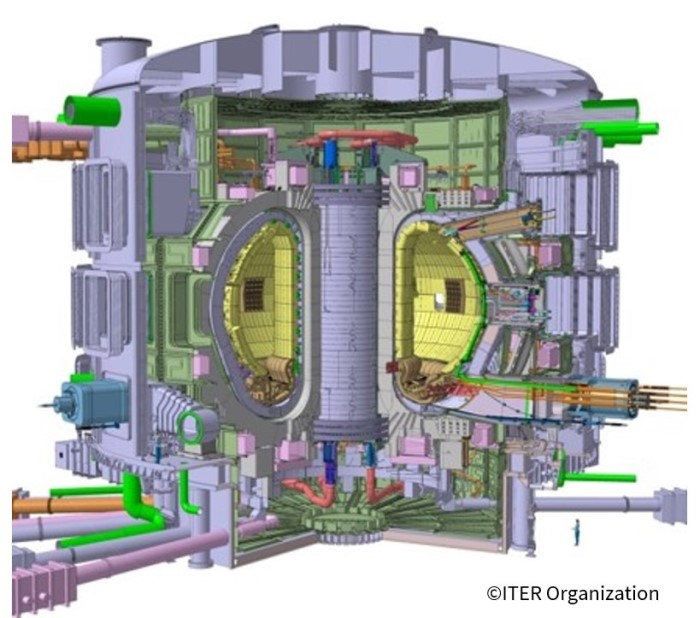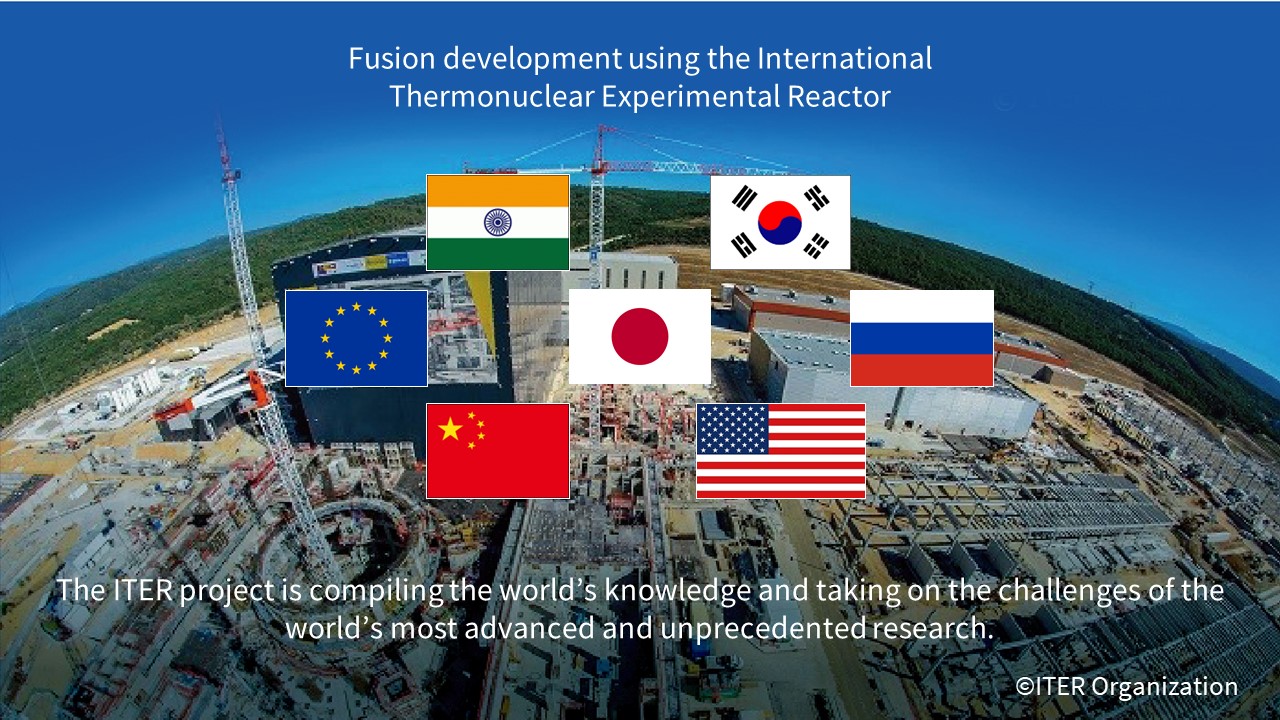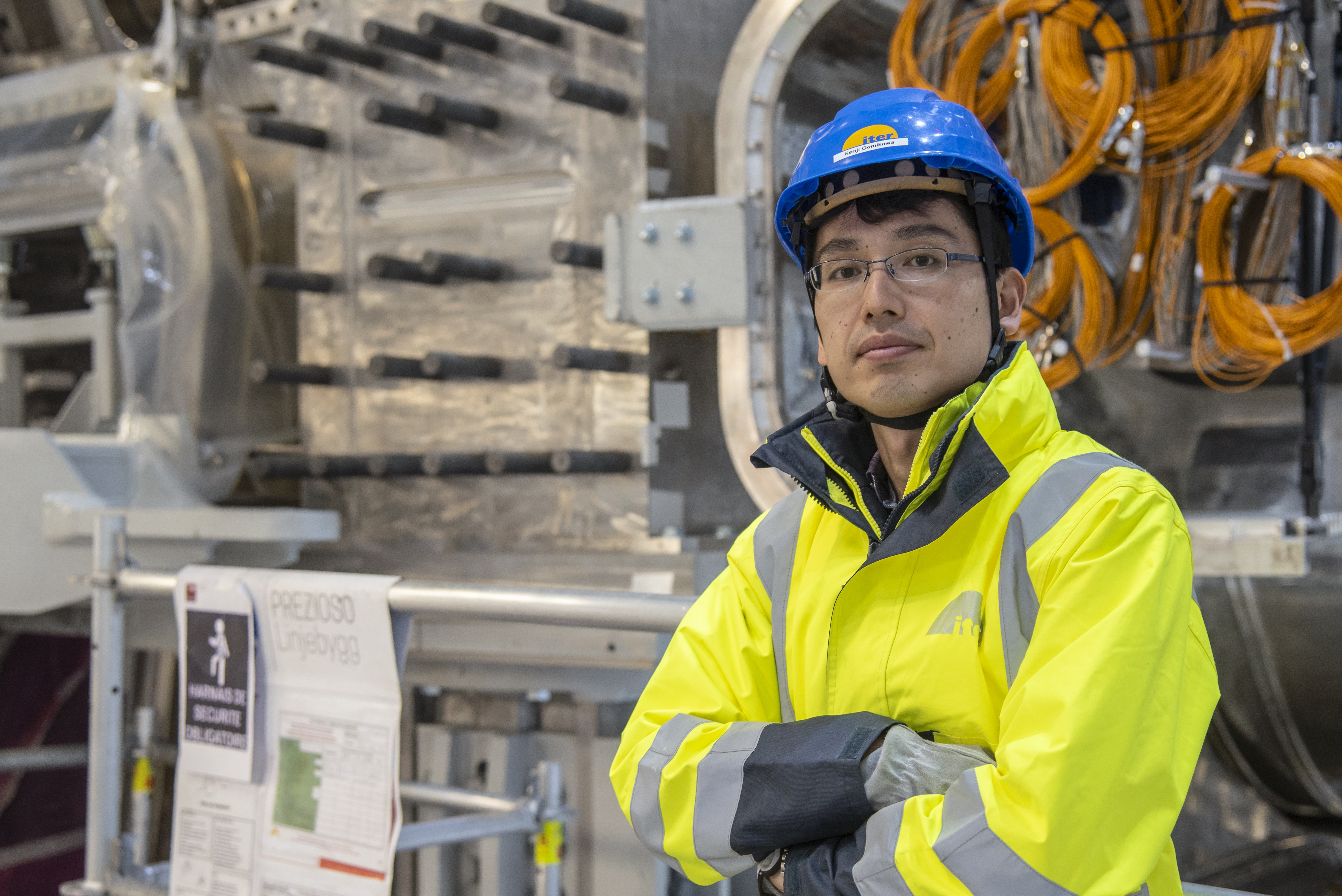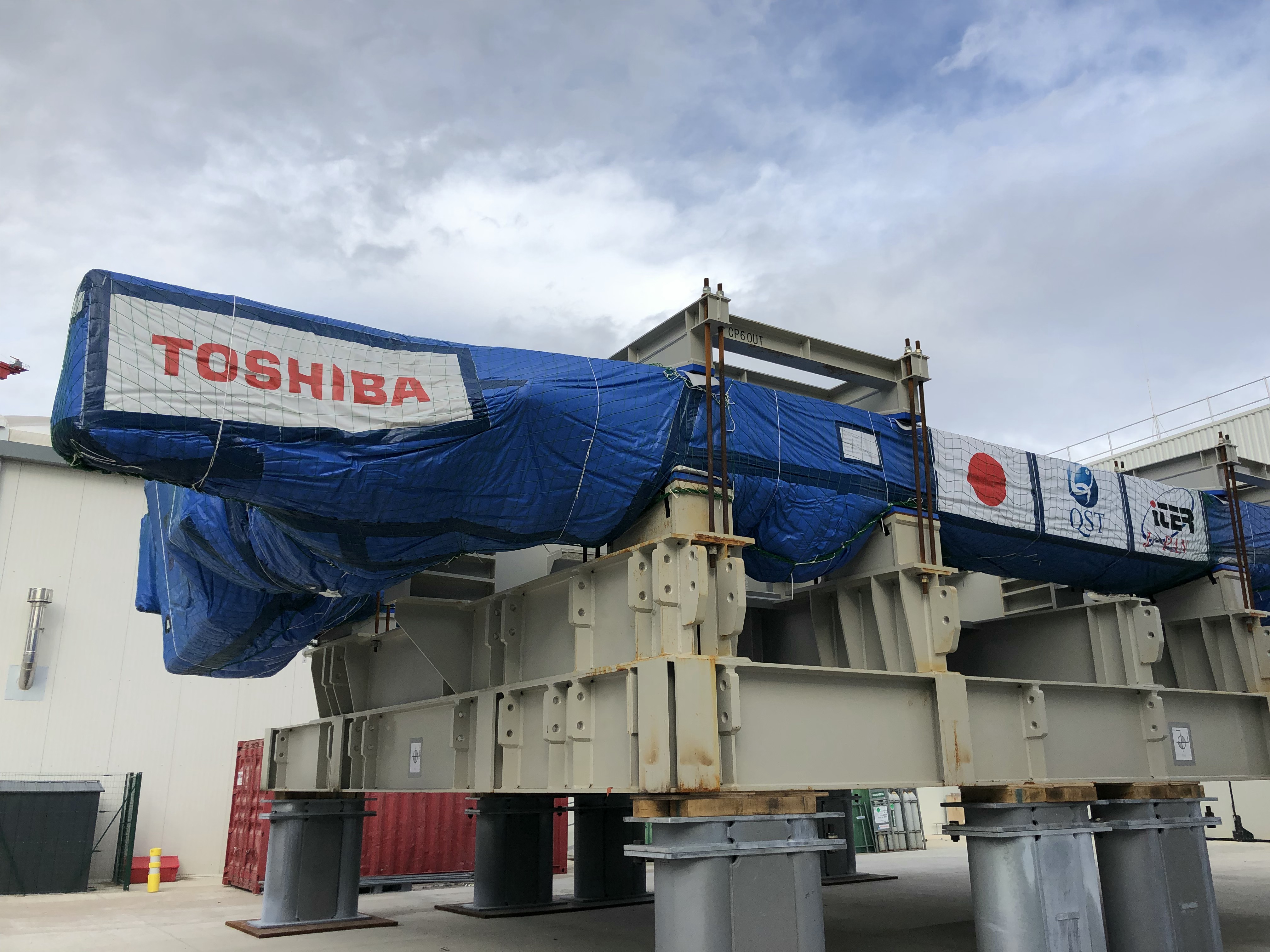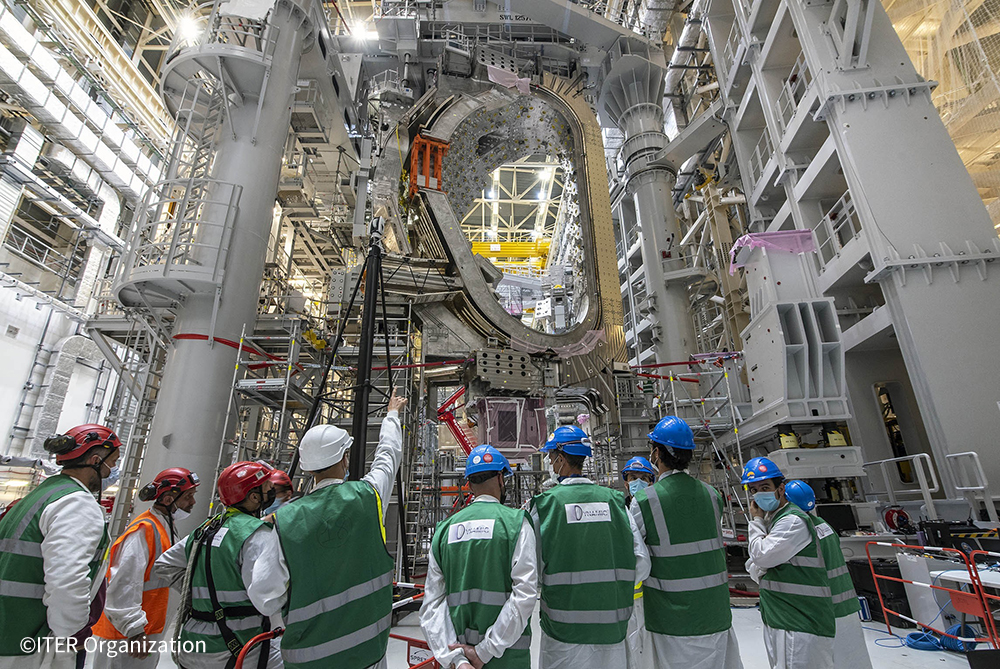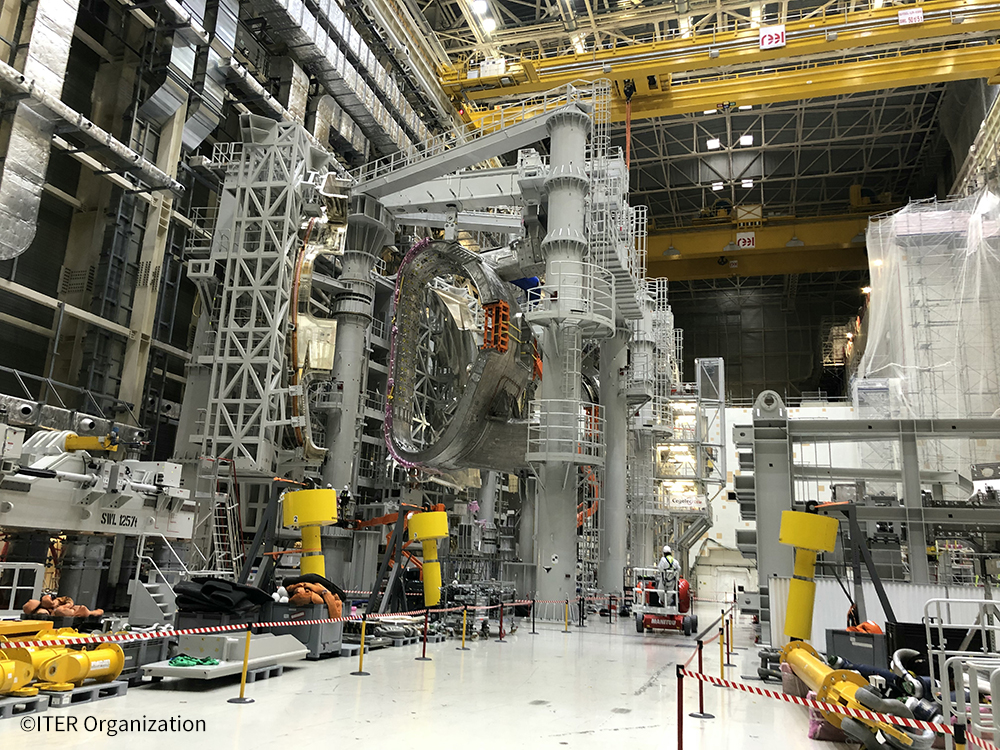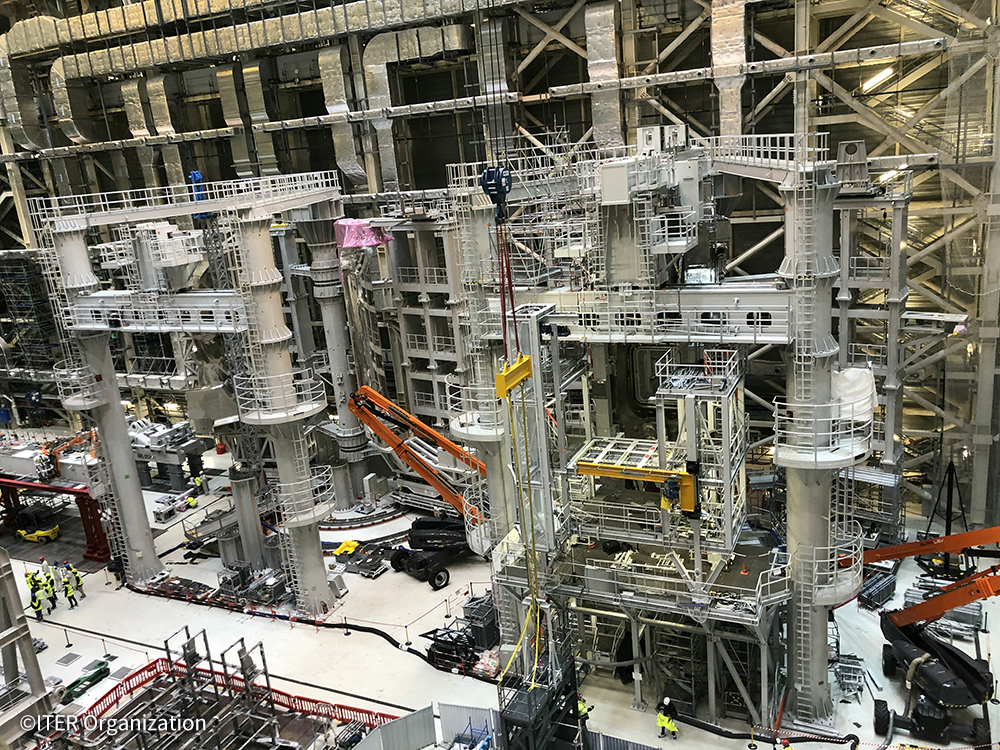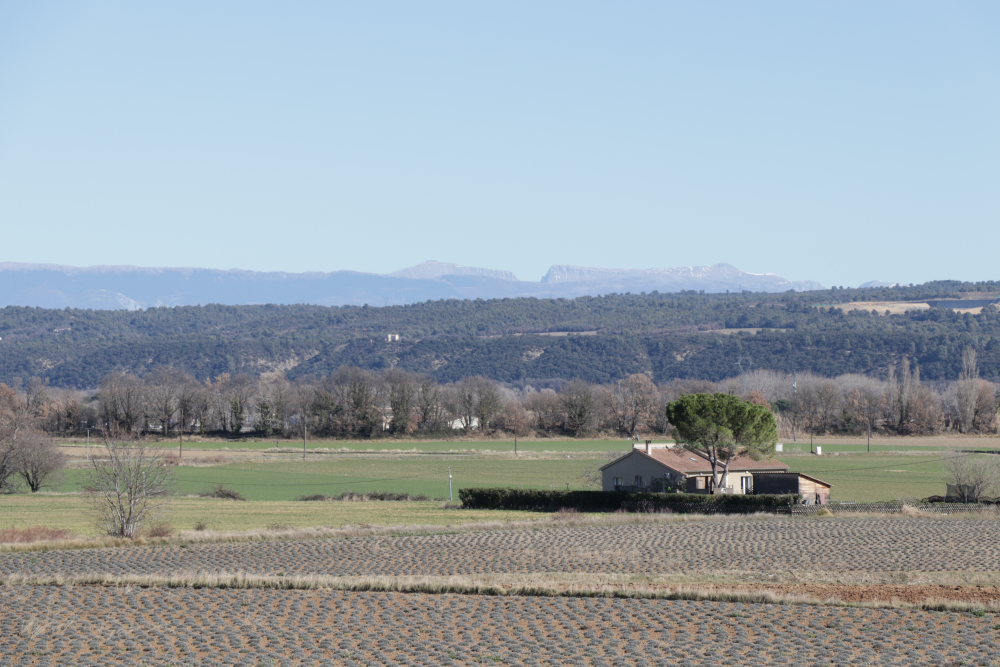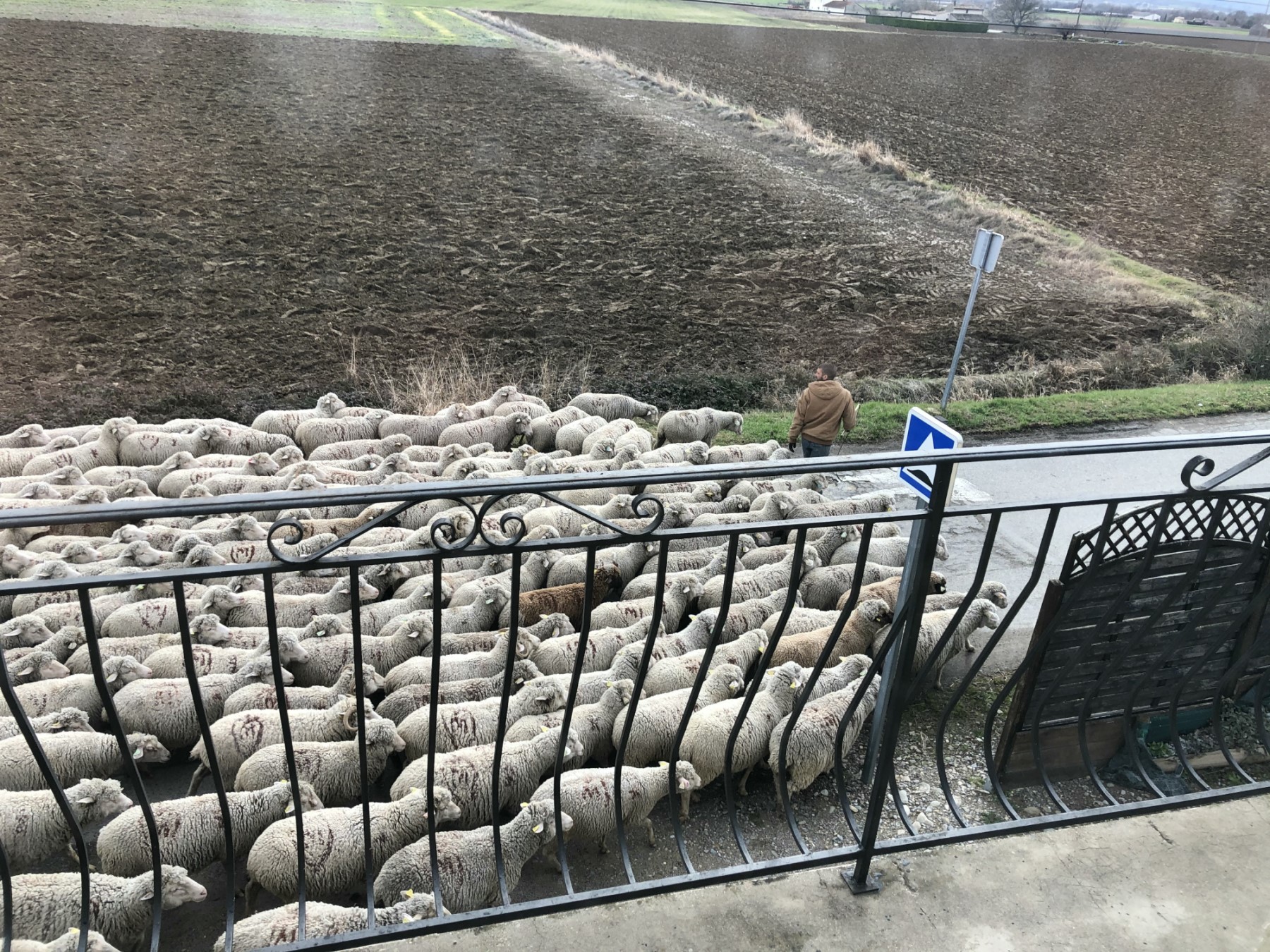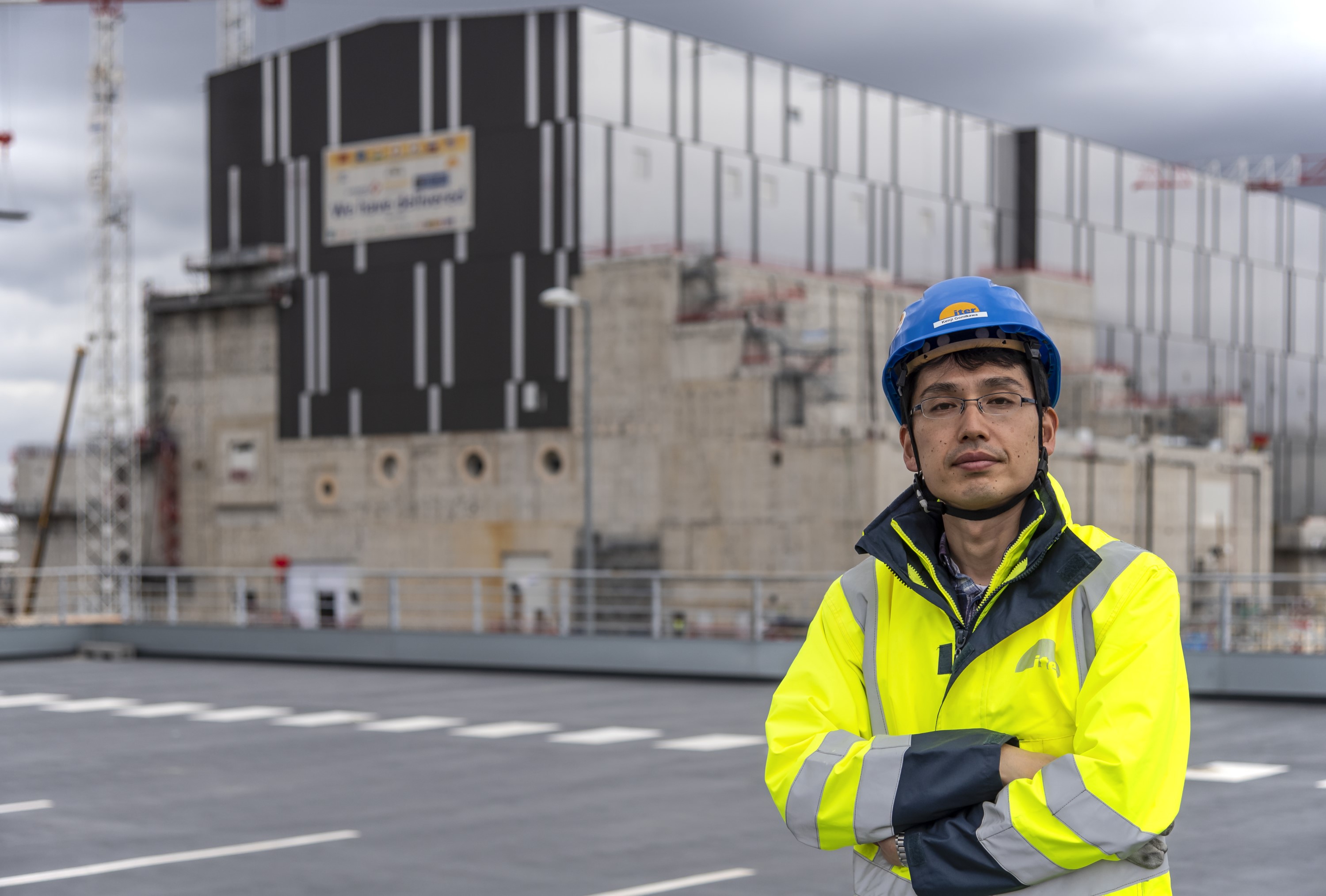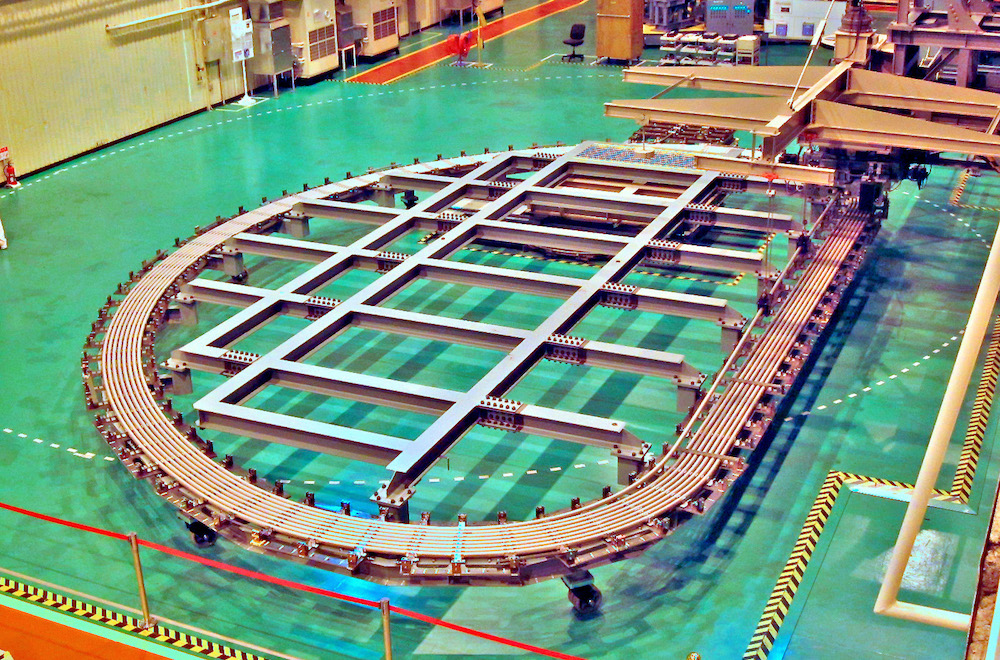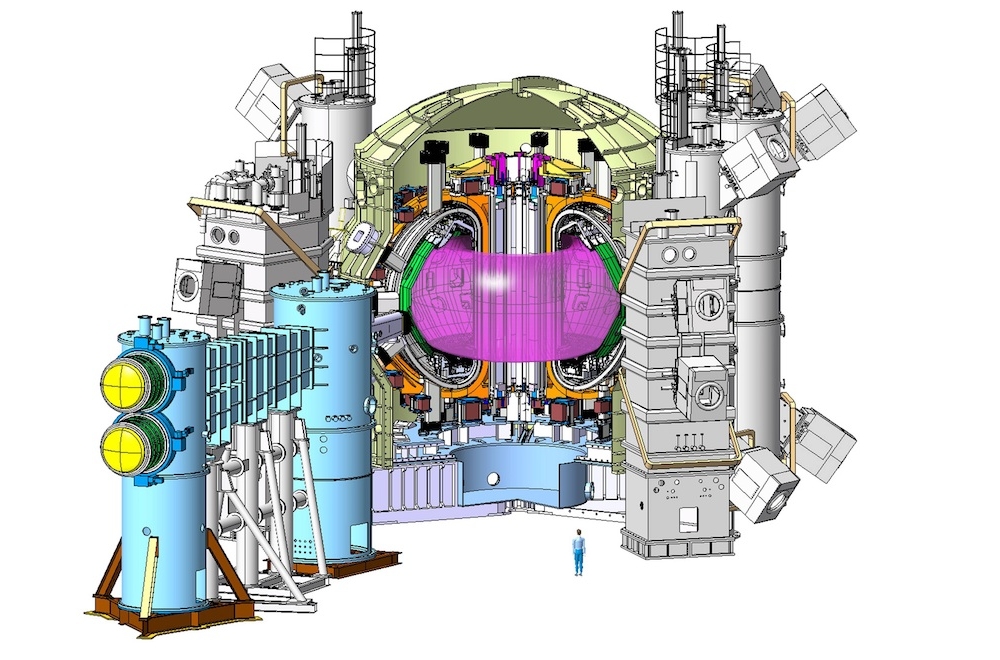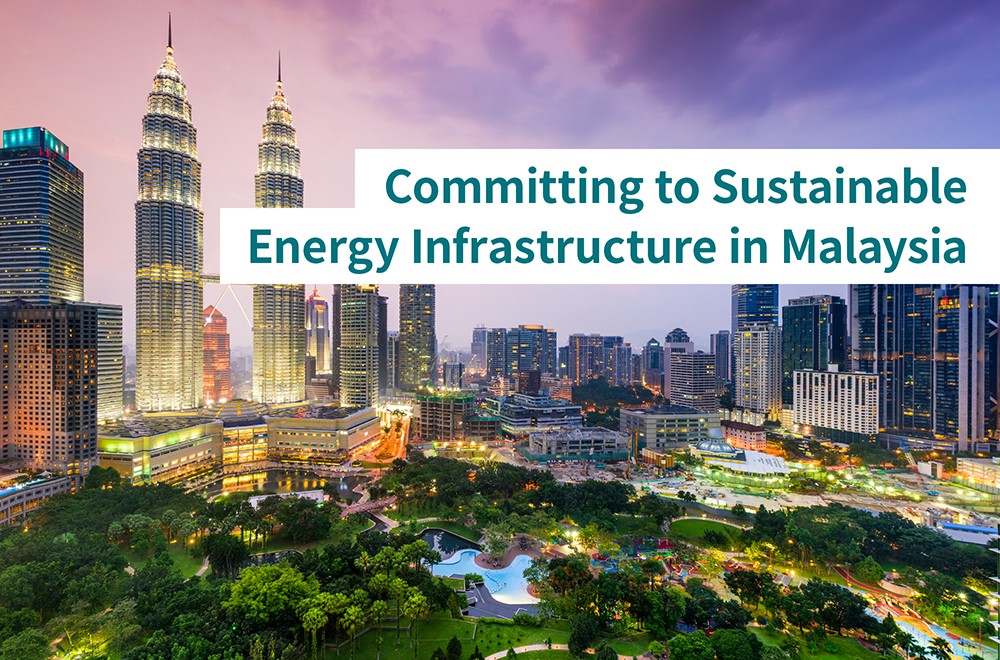An engineer in Provence picks up the gauntlet: A global team takes on the future of energy
2022/10/05 Toshiba Clip Team
- Fusion power will contribute to solving global environmental and energy problems.
- Japan is participating in ITER with countries from around the world.
- Thoughts of an engineer “Committed to People, Committed to the Future.”
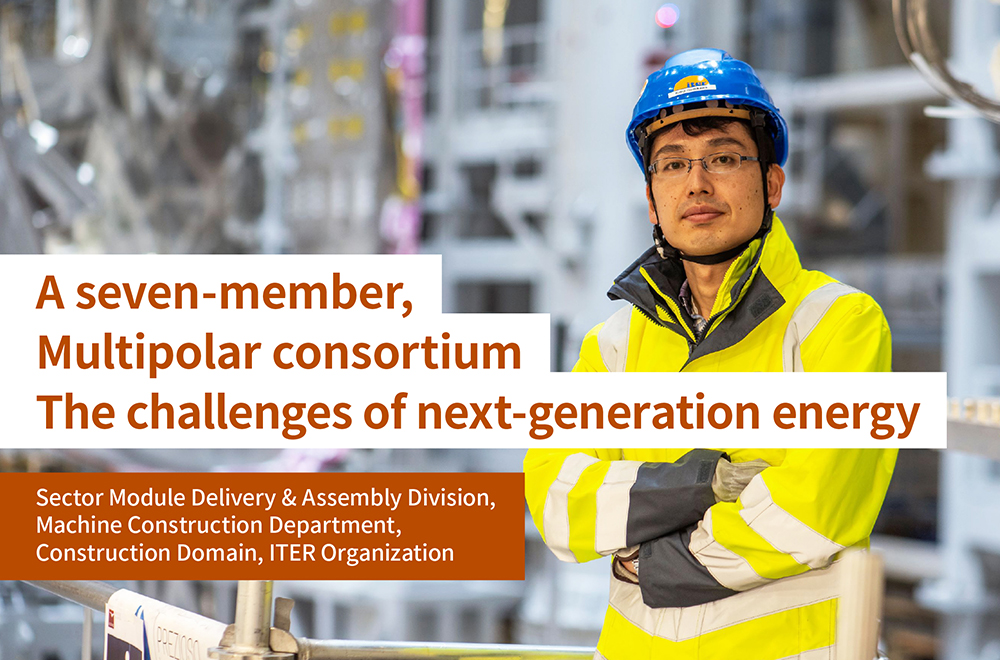
Fusion power is the energy source that will create the future. Its potential has caught the eye of Bill Gates, the founder of Microsoft, and Jeff Bezos, the founder of Amazon, and both have made huge investments in its development. Its advantages are clear: unlike thermal power generation, fusion power is carbon free, and it does not produce the high-level radioactive waste of nuclear power generation. It is the ideal source for large-scale, clean electricity generation.
Currently, an experimental fusion power facility is under construction in southern France, and it will test and advance this technology. The International Thermonuclear Experimental Reactor (ITER) is a co-creation that combines knowhow and expertise from a global seven-member consortium, including fusion technology cultivated in Japan. One person contributing to its realization is Kenji Gomikawa, who came from Toshiba to join the ITER Organization and now works at its home, the Cadarache headquarters in the village of Saint-Paul-lez-Durance. Here he tells us about his work, including the progress of the tokamak, the experimental magnetic fusion device being built, his life, and the future he sees for humankind and our planet.
A project that brings together wisdom, a force to help humankind move forward
In a fusion reaction, nuclei of light atoms, such as hydrogen, collide with one another, forming heavier nuclei and releasing huge amounts of energy in the process. It is the very same mechanism by which our Sun has produced heat and light for 4.6 billion years. Fusion power enjoys many advantages, including high-level safety, none of the risks associated with current nuclear power generation methods, a practically inexhaustible fuel supply, and large-scale power generation. That is why it is attracting a lot of attention as the future of power generation.
However, a tokamak, is very difficult to fabricate; it is a huge, immensely complicated structure that integrates millions of components. The current horizon for the manufacture and practical use of fusion reactors is 2050, a date far enough ahead to underline the many problems along the way. Right now, we are at the point of confirming the scientific and technical feasibility of fusion power.
A sectional view of the ITER experimental fusion reactor
With the 2050 date as the target for commercialization, ITER is taking shape as an experimental facility that will prove the feasibility of nuclear fusion. A seven-member consortium of China, the European Union, India, Japan, South Korea, Russia and the United States is drawing on its collective wisdom, toward achieving the grand and challenging goal of fusion power. Gomikawa is one of the engineers from Japan who has joined the project.
Fusion development using the International Thermonuclear Experimental Reactor
The first step forward on the enormous project of ITER’s construction and first plasma (start of operation) by 2025 came in 2005, with the selection of Caradache as the site for ITER. In the same year, Gomikawa joined Toshiba as an engineer.
On joining the company, Gomikawa put his energy into his work in the development of flash memory, though he had an interest in fusion power that dated back to his time as a student. He acted on this when he got the opportuning to use the in-house recruiting system to fulfill his long-standing desire to work on the engineering of fusion systems.
Kenji Gomikawa, Structural Engineer, Sector Module Delivery & Assembly Division, Machine Construction Department, Construction Domain, ITER Organization
“The 1970s saw the dawn of fusion research in Japan, and Toshiba has worked on experimental equipment ever since,” explains Gomikawa. “A lot of that work was done with universities and research institutes, and includes the JT-60SA, so the company has accumulated knowledge in equipment development and production.
“As a result of this long-standing track record, and a big lead in R&D, Toshiba was entrusted with production of one of the main components of ITER, the toroidal field coils (TF coils). Fabricating these requires very high level manufacturing technology, but we have constantly accumulated expertise in assembly procedures and processes of superconducting coils and in-core equipment.”
After working on the verification of production processes and the manufacture of the TF coil, Gomikawa started to feel he was in touch with the ITER project. When he suddenly came across an announcement of open recruitment of ITER staff, it was like a nudge in the back. His successful application made his dream of participation in the ITER project a reality.
Overcoming language and cultural barriers, co-creation in an international team
In November 2017, Gomikawa joined the ITER Organization at its Cadarache headquarters. He took leave of absence from Toshiba, and is now, as an ITER employee, one of the team working on the construction of the experimental reactor, a structural engineer in the TF coil section.
“I’m the Technical Responsible Officer, the TRO, responsible for procuring TF coil parts from Japan. I make sure there are no problems with the procurement of the coil cases by collaborating with QST, the National Institutes for Quantum and Radiological Science and Technology, which oversees the manufacture of parts for ITER in Japan, and with Toshiba, the manufacturer, to handle technical issues related to the coils. That’s my mission.”
A TF coil that arrived from Toshiba in November 2021.
Any fusion reactor is highly complex, but ITER has been described as the most complex structure in human history. Work on the scale of ITER requires many First-Of-A-Kind processes, and its realization has been made possible only by the very latest advances in engineering technology. Now, resources are being concentrated on construction, with scheduling that allows plenty of time to overcome any unanticipated problems.
ITER’s construction is advancing by procuring huge, elaborate parts from manufacturers in the participating countries for on-site assembly. The TF coils that Gomikawa looks after are immense—each one weighs about 360 tons—and among the main components that will be used to create a high magnetic field. They will confine isotopes of hydrogen in place as they are heated to as much as 150-million degrees centigrade to form a dense plasma, the fourth state of matter. Once that is achieved, the nuclei and electrons of atoms flow freely, creating the conditions necessary for a fusion reaction.
On-site assembly of a sector module comprising a 40-degree vacuum vessel and two TF coils.
Complicated assembly work in the Assembly Building, 1
Complicated assembly work in the Assembly Building, 2
Although from a manufacturer called Toshiba, Gomikawa is strongly aware of his position as an employee of an international organization, as he explains.
“If we come across a problem that stems from manufacturing, we make a strong request for an investigation into the causes and the development of countermeasures, regardless of whether the manufacturer is Toshiba or other companies. ITER is a project that unites numerous countries and manufacturers in working together to create a single thing. There are no barriers between us. Working on-site, I have seen TF coils I worked on arrive, and watched their assembly with my own eyes. When that happens, I am proud to be involved in this project as an engineer.”
About 1000 regular employees work at ITER Organization, and about 40 of them are Japanese. While there are many people from the EU, most notably France, people from all of ITER’s member countries, including China, South Korea and the United States, work in Gomikawa’s section, an environment that truly embodies diversity.
“We have staff members from many different backgrounds, but I value communication that emphasizes where we are and what we are doing. All of these engineers from the participating countries have worked to push forward manufacturing, and we have a lot to convey to one another by talking while looking at things.
“We are from different countries but we all have the same goal. Working on that premise, we can incorporate the good points from each country, and modify and correct problem areas. I think that having this foundational sense of values allows us all to work together, without any great sources of friction.”
Work freely in your own way in the relaxed air flowing through Southern France
With many of its personnel from the EU, particularly France, the ITER Organization has adopted a French style of work. Gomikawa also manages his on-off time, and works intensely in a relaxed life. He and his family have settled 20km north of ITER in Manosque, a town overlooked by the Alps. In this idyllic rural countryside, it is not unusual to see hundreds of sheep being shepherded along the road.
The Gomikawas’ home in Manosque.
A shepherd leads a flock of sheep to new pastures along the road in front of Gomikawa’s house.
“On weekends, we might enjoy a barbecue on the terrace, with some of the local rosé wine, or go hiking with family friends. I enjoy living here in southern France with my wife and 7-year-old child. Occasionally, we get in the car and drive to Spain, Italy, Switzerland or some other country. My life has been enriched by new experiences, and by being able to relax and spend time with my family, surrounded by nature. Without doubt, QOL has become more important to me than ever.”
Committed to People, Committed to the Future. Envisioning energy in the 2050s
As ITER starts to take on its final form, and the countdown to first plasma progresses, Gomikawa ponders the next phase of his life.
“I expect to be here as a member of the construction domain until at least first plasma, in 2025. For the 10 years after that, the ITER Organization will continue to carry out experiments, towards improving accuracy. Commercialization that makes electricity from fusion power a part of our lives will take even longer.
The best estimate of when the lessons from the experimental tokamak will be put to practical use is the middle of the 21st century, around 2050. The technological knowhow achieved through this international cooperation will be a hard-earned asset for humankind, a step toward tomorrow. Against this backdrop, what kind of future does Gomikawa see?
“When I participate in a project, the starting point I constantly return to is Toshiba’s management philosophy, ‘Committed to People, Committed to the Future.’ Why are we working on this difficult project? It’s to overcome existing problems, and to create the best way for the survival together of people and Earth. An important aspect of energy policy is an energy mix that incorporates energy saving targets alongside consideration for a balance in power generation methods, such as thermal power and renewables. Realizing fusion power will bring dramatic changes to the way people view energy, and have significant impacts on the policies of countries around the world.
Probably because he has visited the ITER facility, my son now has the dream of working at ITER in the future. The fact is, commercialization and social implementation of nuclear fusion will be entrusted to his generation. However, if we are going to have a successful baton handover, we engineers who are active today must combine our wisdom. Beyond profits for our own countries or manufacturers, we have to turn our face toward ITER. The world is a single team that envisions the dream of fusion energy.”
Kenji Gomikawa in front of the Tokamak building
Click here for news on the latest status of ITER. Make sure not to miss the videos at the bottom of the page: https://www.iter.org/construction/TokamakAssembly
![]()





